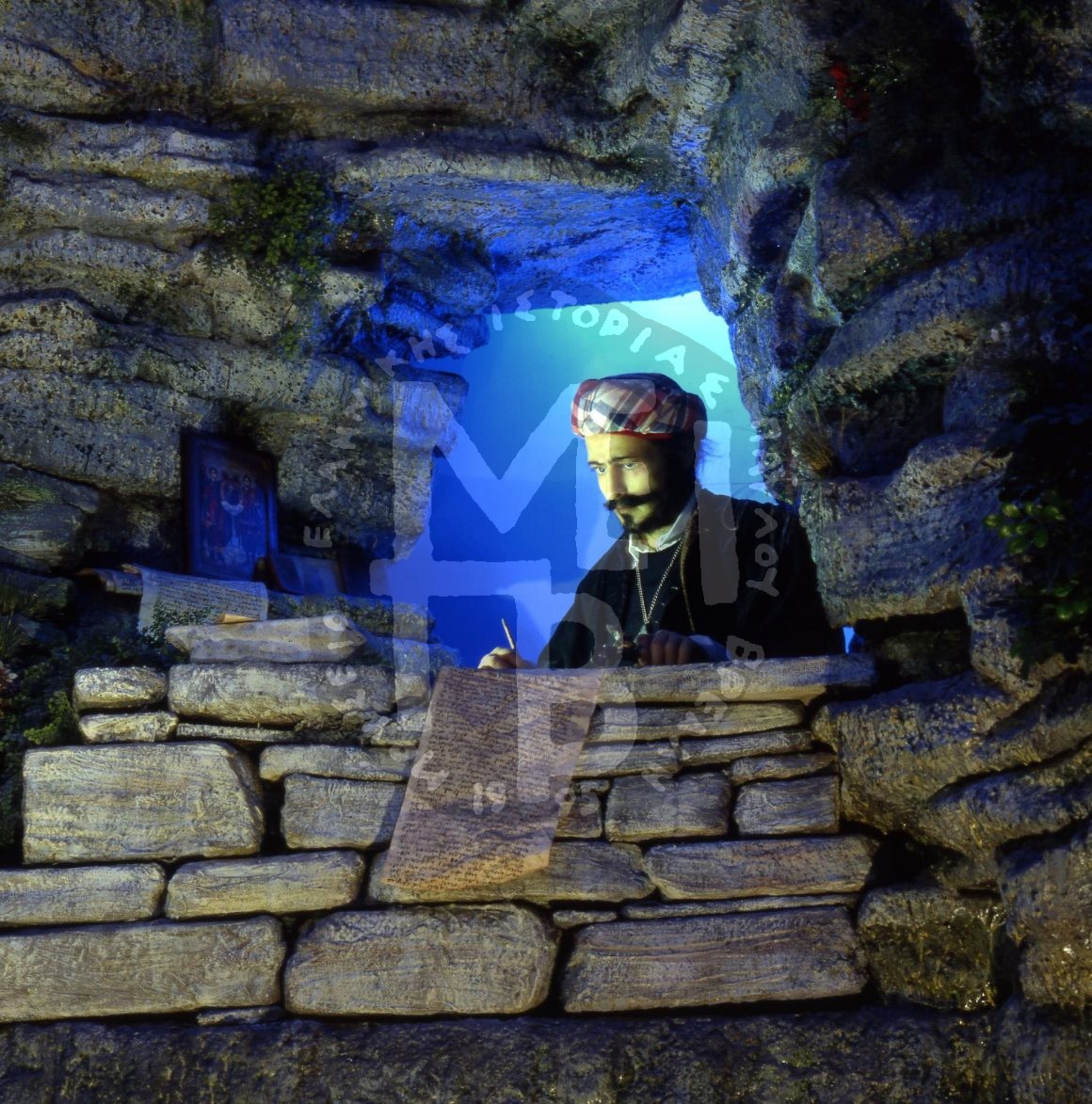“He was born in Avoriti village, Krokili area, near Lidoriki, Dorida. After his father’s assassination by the Turks, in 1804, he came to Livadia. He spent some time in Ioannina and Arta engaging in commerce before being initiated to the Association of Friends, somewhere around 1820. He got betrayed and imprisoned but he managed to escape. The course of his life changed when the renowned armatolos, George Bakolas took him in his troops. His wounds resulting from his fights would torture him till his old age. Other wounds, provoked by those who regarded him as an enemy to the Monarchy, will mark both him and history…
The revolution had broken out and he became an active chief of arms in 1822. He fought along with Nikitaras in Salamina and Androutsos in Roumeli. Later (from October 1823 until 1824) he persistently tried to reconcile the parties involved in the civil war that had broken out in Morias. It is there that his victory over Embrahim, on January 16, 1824, will go down in history. The following years would be marked with events like his marriage, the siege of Athens and the death of his friend and comrade in arms, G. Karaiskakis, in 1827.
In February 1829, he began writing his “Memoirs”. He was assigned General Chief of the Executive Force in Peloponnesus and Sparta by Kapodistrias. Since ‘he is unemployed’ and ‘doesn’t want to hang out to cafes or something like that’ he made up his mind to make good use of the letters ‘he occupied himself with learning for a couple of months’. The 24 letters of the Greek alphabet, without stresses and punctuation marks are his knowledge. With this knowledge he wrote a piece of work of invaluable historic value. Typically, his Memoirs is a historical document written between 1829 and 1850. In essence, it is a monumental piece of work of an eye witness of solid judgment, great soul and life rich in unique experiences. He bequeathed the following generations with information about the events of his time, the transition of the former enslaved Greece to the first tough years of Independence, and last but not least, actions and morals of various types, that either influenced history itself or were examples of social ferment in progress. Not only was he a worthy fighter of the revolution, but also an important part of the New-Hellenic literature, a National figure.
Simultaneously, he handed down a legacy of great value, when between 1836 and 1840 in cooperation with the painter and fighter Panagiotis Zografos, they described the true history of 1821 by means of 24 paintings, extremely simple to the eyes of the ignorant but valuable to the eyes of historians and artists as they ‘narrate’ everything that took place on earth and land.
During the years after 1830, he played a leading role in enacting the Constitution. In 1852, he was brought the charge of ‘high treason’ against the regime –Otto and Amalia’s reign. He was put in prison, his children being ‘wet with tears and barefoot’ and he himself sick with his wounds killing him.
In 1853 he was sentenced to death, but sentence changed to life imprisonment after the mediation of Prime Minister, Kallergis. Eventually he was granted a reprieve in September of 1854. He lived to see the dethronement of Otto in 1862, his son playing a leading role in the movement. He regained the rank of Major General while two years later he was commissioned as a Lieutenant General. His wounds and physical exhaustion were is sole enemies until he died on April 27, 1864.
Makrigiannis is one of the creators of the revolution of 1821. He differs from other personalities of his time as he is a unique combination of a restless, brave, unselfish man, a man of integrity and faith in his religion and the noble ideals of his ancestors. What brought him close to other heroes of 1821 was his passion for freedom and justice.
Leaving the last theme of the pre-revolution period behind, we turn left on the curved corridor. Opposite we see Makrigiannis. I have placed him in such a way that it is the first and sole figure we see as we walk down.
The whole composition of the Revolution of 1821 is made with rocks which I made so that I would point out the rough fight of these people. I exploited the sizes of Ali-pasha’s slaughter on the other side. The exterior bulk size of the one becomes the interior of the other. With sackcloth and gypsum I created openings to the sky, the outlines of the rocks with vegetation fitting to the season the first battles began in Valtetsi, betraying the time of the year, spring.
Next to Makrigiannis I have placed some icons I have made look old. He was a deeply religious and pious man. These two words bear the most powerful and honest meaning that can be attributed to them.”

